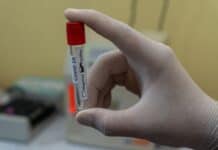 The US Centers for Disease Control and Prevention (CDC) is now requiring a negative COVID-19 test from all air passengers entering the United States.
The US Centers for Disease Control and Prevention (CDC) is now requiring a negative COVID-19 test from all air passengers entering the United States.
Testing before and after travel is a critical layer to slow the introduction and spread of COVID-19, the CDC said in a statement, and this strategy is consistent with the current phase of the pandemic and more efficiently protects the health of Americans.
Variants of the virus continue to emerge in countries around the world, and there is evidence of increased transmissibility of some of these variants. With the US already in surge status, the testing requirement for air passengers will help slow the spread of the virus as the American public gets vaccinated.
Before departure to the United States, a required test, combined with the CDC recommendations to get tested again 3-5 days after arrival and stay home for 7 days post-travel, will help slow the spread of COVID-19 within US communities from travel-related infections. Pre-departure testing with results known and acted upon before travel begins will help identify infected travelers before they board airplanes.
Air passengers are required to get a viral test (a test for current infection) within the 3 days before their flight to the U.S. departs, and provide written documentation of their laboratory test result (paper or electronic copy) to the airline or provide documentation of having recovered from COVID-19. Airlines must confirm the negative test result for all passengers or documentation of recovery before they board. If a passenger does not provide documentation of a negative test or recovery, or chooses not to take a test, the airline must deny boarding to the passenger.
“Testing does not eliminate all risk,” says CDC Director Robert R. Redfield, MD, in a statement. “But when combined with a period of staying at home and everyday precautions like wearing masks and social distancing, it can make travel safer, healthier, and more responsible by reducing spread on planes, in airports, and at destinations.”
This order was signed by the CDC Director on January 12, 2021 and will become effective on January 26, 2021.
U.S. Travel Association Executive Vice President of Public Affairs and Policy Tori Emerson Barnes weighed in on this news. “A testing requirement provides yet another layer of safety for international travel, and should be accompanied by other risk-based policies—including lifting international inbound travel restrictions and dropping any post-arrival quarantine requirements.
“With an international testing requirement in place, international visitors and returning residents would be tested at much higher rates than the general public and pose a much lower risk of transmitting the disease. So it would make sense to lift international travel restrictions and quarantine requirements at the same time. With a risk-based, layered approach to health and safety throughout every aspect of travel, it’s possible to both protect public health and allow travel to safely resume.”
You Might Also Be Interested in










